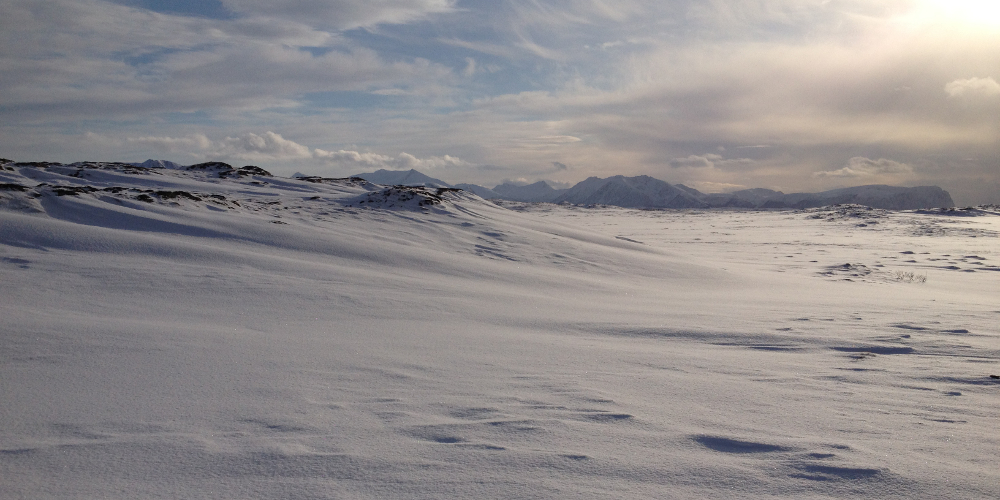Eric Holm – Saturation Point
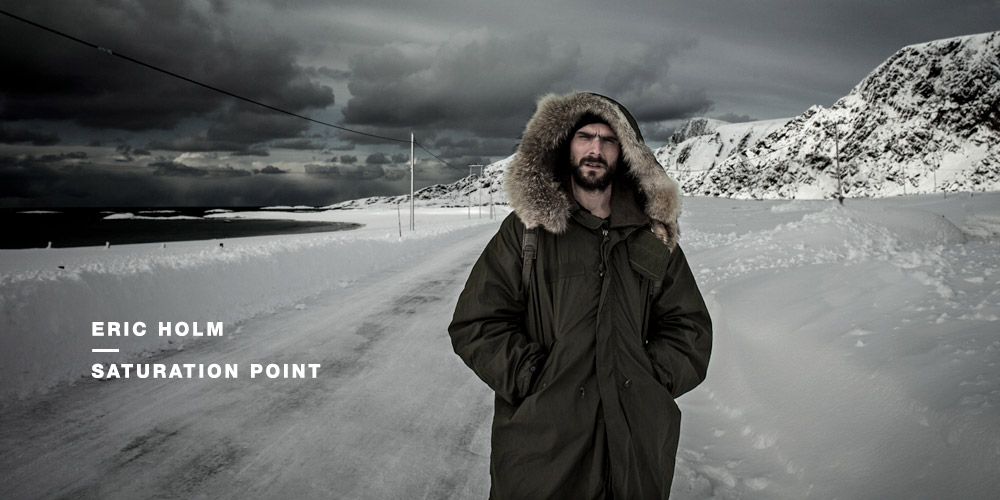
Eric Holm recounts his trips to the Arctic Circle and Norway’s sub-zero fjords in search of sounds never heard.
It was a little rough, admittedly, but the day I met Eric Holm in south London establishment, The Hermit’s Cave, both of us could say the pub almost felt safer there than what it did outside. The world that afternoon was still reeling from the shooting in Florida night club Pulse, the Brexit vote was looming, Donald Trump’s presidential campaign was forging ahead and that morning we both woke to the news of a French Police commander and wife having been savagely murdered in front of their child. With Royal Ascot’s June 14 races blaring on the TV above us, overcast weather, even tube strikes let alone electronic music, felt trivial topics to be discussing among all this nihilism.
It was around 15 minutes into our hour and a half conversation that Holm opens up with the slightest of ho-hums: “I might actually end up being a commercial diver in the end after all.” Holm, a renegade ambient producer, has been diving recreationally and commercially for 20 years, with trips taking him to wrecks, reefs and submerged industrial squalor in the UK, Spain, Egypt, Thailand, America and Norway. He’s a towering figure, affable, and talks quick with a “mangled” New Jersey accent that often starts one radical story just as he finishes the other, all peppered with micro-bursts of sound effects, laughter and obscenities.
“You can work in what they call hazmat diving,” Holm continues, “which is like sewage and nuclear power plants and all that sort of stuff.” Taking a swig from his pint he explains, “you have these particular suits that you wear which have constant positive air pressure so if you get a hole, it blows air out and doesn’t let any water in, that’s the theory right – you can’t let anything into these things because you’re literally diving in shit.” Enter rad story: “there was a guy I knew who came up and had a bit of moisture, not even a leak, just a bit of moisture – he thought, on his toe – and two days later they were going to amputate his leg from the knee, right… and he was like, nah, and got up and dragged himself out of the hospital and just sweated it out at his house until it went away, and it did.”
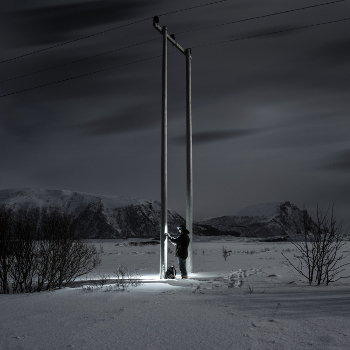 While it’s Paul Jebanasam, James Ginzburg and Roly Porter that are most commomly associated with the Subtext label, Holm is in fact a solid part of the crew. He recounts to me the time he shared a flat in Bristol with Ginzburg and Jebanasam. “We would have such intense conversations. A Saturday’s breakfast would last until 4PM in the afternoon; just like, keep making tea and chain smoking out the window.” Subtext released Holm’s debut album, Andøya (pictured left), in 2013, a singular vision of naturalistic sound design which presented seven tracks of “thundering awesomeness”. Its material – stretched, pitched and detuned – was mostly sourced using contacts mics (which records sound through solid objects) stuck to high voltage power lines humming loudly somewhere near the middle of the Arctic Circle. Not bad.
While it’s Paul Jebanasam, James Ginzburg and Roly Porter that are most commomly associated with the Subtext label, Holm is in fact a solid part of the crew. He recounts to me the time he shared a flat in Bristol with Ginzburg and Jebanasam. “We would have such intense conversations. A Saturday’s breakfast would last until 4PM in the afternoon; just like, keep making tea and chain smoking out the window.” Subtext released Holm’s debut album, Andøya (pictured left), in 2013, a singular vision of naturalistic sound design which presented seven tracks of “thundering awesomeness”. Its material – stretched, pitched and detuned – was mostly sourced using contacts mics (which records sound through solid objects) stuck to high voltage power lines humming loudly somewhere near the middle of the Arctic Circle. Not bad.
“I’m not interested in synths, I don’t want to play anything,” Holm says, “I don’t do drum machines – I don’t do drums – I’m only interested in what stuff sounds like.” The sounds of Andøya are wholly unique, but as Holm explains he feels as though the music fell by the way of minimal techno, “it almost had a Raster-Noton vibe,” he says. This, Holm suggests, is something he was keen to avoid seeing as Emptyset – aka James Ginzburg and Paul Purgas – had previously aligned themselves with the German label in this way. Yet as someone writing about his music, this fear, if you can call it that, merely comes down to Holm’s modest insecurities about being a producer.
“I never wanted to make dance music or anything like that,” he says, “there was a long period of trying to get my head around what it is I wanted to do.” Holm explains he’s sometimes at a loss when trying to find a reference point to associate his music to – which, if we’re being honest, should be the case for every adventurous ambient producer. “So,” he says, “you just sit there and go: is that a satisfying listening experience yet? No, it’s kind of a bit too long, a bit too boring there…” Holm adds, “I never had the idea to make anything until I reached this point where I thought, yeah; basically the idea of working with field recordings and making sounds out of them.”
Subtext has just released his follow up LP, Barotrauma, which unlike Andøya, Holm calls hugely conceptual. Barotrauma sources its recordings from 50m below the surface in Norway’s sub-zero fjords, and it’s not like you have to imagine being under water listening to this music. “There’s a lot less of bashing away at stuff on Barotrauma and it’s more submerged, what I think of as, ‘industrial ambient music,’” Holms says. Andøya, he mentions, was billed as concept-driven because of how it was made: “dude goes up to Arctic, records some shit, makes an Arctic album.” It remains Holm’s most bracing work, and something he remembers Jebanasam and Ginzburg dragging into the light. “They were like you gotta release it and I was like I don’t want to release it, it’s not finished, and they were like: it’s finished!” Barotrauma, though, “is all part of this feedback loop of being in music and underwater,” Holm says, “somewhere in the blur of that is where Barotrauma exists.”
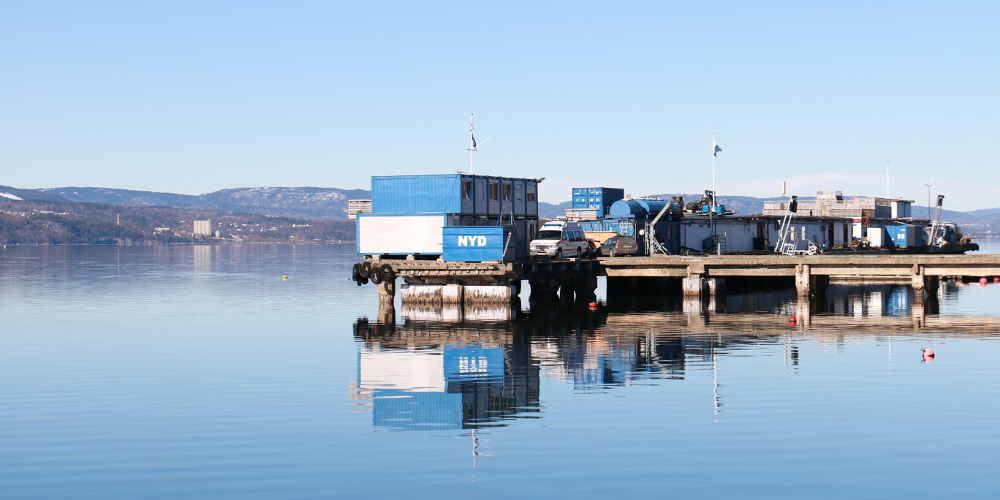
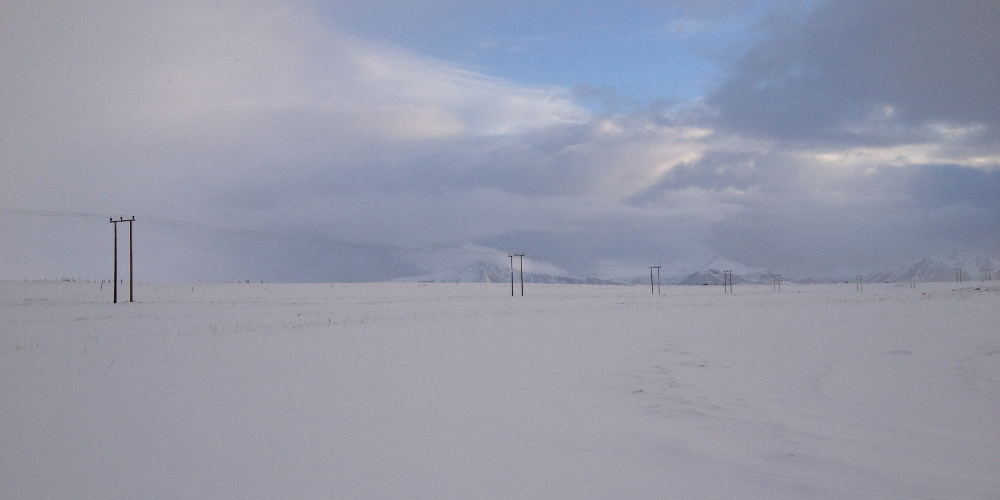
“Anyway,” he continues, “looking at ways into the diving world and music, it wasn’t until I thought, hang on wait a minute, the whole industrial diving thing, that’s better, that’s good. Like just scuba is a bit, just, Disney diving, flapping around,” Holm says. “I made a couple of wreck tracks that were OK, but really infusing it with the industrial thing, that had legs, in terms of how I was already making music. So it was always going to be a big concept thing.” Unlike Andøya, which snarls, growls and electrocutes the ears, Barotrauma is swell of heavy, transparent bass, subtle, flowing frequencies of cold, tonal ambience and a world of undiscovered, deliquescent sound design. The album, cold swell after swell, captures the dark, still beauty and dread we as the listener might imagine isolation at such depths would conjure.
“Barotrauma is basically; ‘baro’ being pressure and ‘trauma’ being injury, so it’s basically like burst lungs, burst sinuses, eardrums – exploded blood vessels in your eyes,” Holm explains. “People get barotrauma from masks, quite literally, it pops all the blood vessels in your eyes, your eyes just go completely blood red, it doesn’t hurt, goes away in a few days, but man it looks really creepy,” he says, “Google that stuff and it’s like, whoa…” A murky selfie of the AH5 Freeflow Air helmet Holm wore diving the fjords graces the album’s cover, with album track “AH-5” an explicit reference. “Basically at any given moment down there you’re lucky if there’s just you, but mostly there’s cranes pulling divers up and down, there’s dive bells going up and down,” Holm recounts. “Sound travels pretty fast underwater so half the recordings are the guys down on Station 2 with jack hammers, you know,” Holm says, imitating the sound of heavy machinery.
“I had mega thick insulation,” Holm adds, “but I was still freezing by the end of the dive, the water was like 2-degrees, 3-degrees, but in dry suites you get cold quite quickly.” After completing his commercial dive course in the Norwegian fjords, Holm was allowed back on site the following winter as part of an artistic residency to record material for Barotrauma. Following the handful of live performances Holm has actually played, including Atonal festival last year, footage captured from his dives are planned to be used in future live AV shows.
“I showed up and we’re at Kraftwerk,” Holm remembers of Berlin Atonal, totally intimidated by the cavernous venue. “I’m like: ‘you’re fucking kidding me?’ I’ve never set foot on a stage before, anyway, I’m sitting there during sound check and Jabba (Paul Jebanasam) is going ‘keep turning it up’, I’m like ‘I can’t man, everything’s shaking.’” With the cathedral reverb of Berlin’s Kraftwerk building swallowing the dynamics of Holm’s music, it was Up To Date festival in Bialystok, Poland – home of Żubrówka vodka – that he remembers most fondly. “It was like taking Andøya and sticking it underwater, awesome, I still listen to that set,” Holm says.
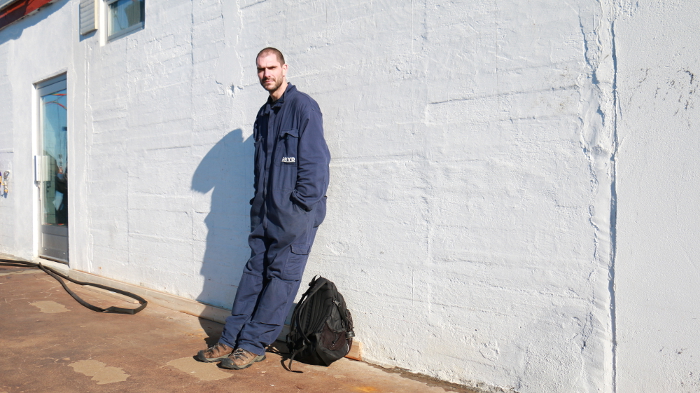
With someone that freely admits having no reference point for the music they make I was intrigued to find out if there is in fact any producers that have inspired him. Apart from The B52s or Led Zeppelin that gets Holm through his working days as a decorator, his brain locates Deathprod as an influence as well as Mexico’s Murcof. Of the latter, Holm hones in on Murcof’s 2005 album Remembranza: “The first track off that, “Recuerdos”, it was just this particular way of working with objects of sound within a space that gelled together in this way that made music… that lit some part of my head on fire and I thought music can do some totally different stuff.”
“What’s inspiring is like spending three months in Cumbria,” Holm adds, “nobody cares, it’s like farmers and shit, you see other things. You need to pull things into it, it’s not a thing unto itself. This place is more inspiring to me because there’s less of it and it’s more just people living their lives than everybody you run into being like, ‘hey, what’s up’.” Moving to the UK, unsurprisingly, was hugely influential in the evolution of Holm’s tastes and like countless others he was swept up by the rapture of ‘90s jungle, drum and bass and its experimental offspring.
“When I showed up jungle was like really…it was still proper jungle… All that ’90s stuff, Future Sound of London, Aphex Twin and all that kinda crap – never heard of that in America – came over here and I was like this is awesome,” Holm remembers. “Photek, remember him, Modus Operandi, man that was an album.” While Holm’s own albums may yet to be recognised as seminal, both Andøya and Barotrauma are lessons in how far some producers will go to discover, capture and create music, which he relates back the halcyon days of jungle.
“Now we’ve kinda heard everything,” Holm feels, saying of the ‘90s, “things were good fun, music was this drive to make sound nobody had ever heard before.” Now, Holm says, “I don’t think anybody gets that experience, once you’ve gotten into electronic music where you go: that’s so fucked up I can’t tell what that sound is and I feel like I almost went insane for a minute… I just don’t get that out of music anymore.” As the story goes, it was Ginzburg who hatched the idea of travelling as far north as possible to catch aurora borealis, which lead to the recording of Andøya. “When we started to record the album, it started to snow, and I shit you not, we saw about two meters of snow fall in about a week, it was unbelievable man, it started snowing and it didn’t stop, and we were like you got to be kidding,” Holm remembers.
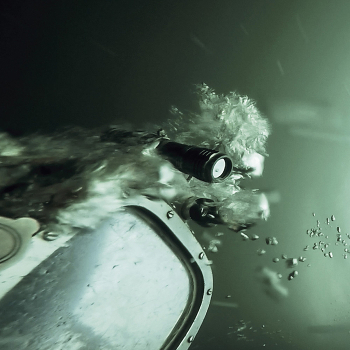 “Have you seen the northern lights?” Holm asks, “Andoya is pretty flat for the most part, but you still get northern lights in a big way,” he says. “It’s really something else; you’ll cry, I’m serious, it’s like seeing God,” he adds. “People get ridiculously happy when they see it, some kind of weird spiritual thing that effects everybody, even the people who live there.” Borealis-inspired tracks from that expedition, mind, never made the LP. Too happy, maybe, Holm concedes. As for Barotrauma (pictured right), Holm says, “the album is sort of a really weird balance of what was going on down there and the seductive image in my mind… It’s like realising, I’m looking for something down there that I can’t find; it’s not down there, it’s not up here, it’s kinda in my head.”
“Have you seen the northern lights?” Holm asks, “Andoya is pretty flat for the most part, but you still get northern lights in a big way,” he says. “It’s really something else; you’ll cry, I’m serious, it’s like seeing God,” he adds. “People get ridiculously happy when they see it, some kind of weird spiritual thing that effects everybody, even the people who live there.” Borealis-inspired tracks from that expedition, mind, never made the LP. Too happy, maybe, Holm concedes. As for Barotrauma (pictured right), Holm says, “the album is sort of a really weird balance of what was going on down there and the seductive image in my mind… It’s like realising, I’m looking for something down there that I can’t find; it’s not down there, it’s not up here, it’s kinda in my head.”
Diving, Holm adds, “it’s been a long road.”
Interview by James Manning
Images courtesy of Eric Holm and Subtext
Eric Holm on Juno
